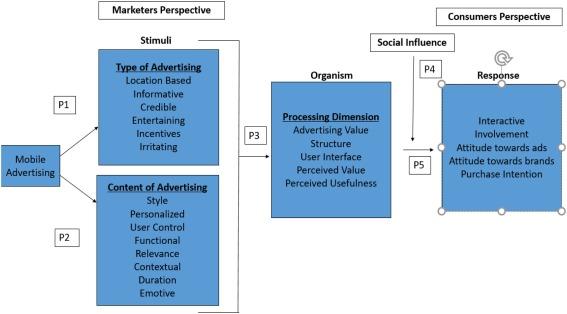Real-World Case Studies: Proven Strategies for Successful Inclusion in the workplace
Introduction: the Power of Inclusion at Work
In today’s competitive business landscape, embracing diversity and inclusion in the workplace is no longer an optional HR policy — it’s a strategic advantage. Companies that champion inclusive cultures experience greater innovation, increased employee engagement, and stronger financial performance. But what does successful workplace inclusion look like in practice? This article delves into real-world case studies,exploring proven strategies organizations use too build truly inclusive workplaces. Whether you’re an HR professional, business leader, or employee, you’ll find actionable insights to promote diversity and foster belonging on your team.
The Benefits of Workplace Inclusion
Before exploring case studies, let’s review the substantial benefits that inclusive workplaces deliver. Successful inclusion strategies go beyond compliance; they create environments where everyone feels valued and empowered to contribute.
- Increased Innovation: Diverse teams bring different perspectives, fostering creative problem-solving.
- Enhanced Talent Attraction & Retention: Inclusive organizations appeal to a broader talent pool and enjoy higher employee satisfaction.
- Stronger Financial Performance: companies with diverse leadership are more likely to outperform competitors.
- Improved Reputation: Customers and partners gravitate towards organizations with visible commitments to equality.
- Healthier Cultures: Employees thrive where diversity,equity,and inclusion are prioritized.
proven strategies for Workplace Inclusion
effective inclusion strategies are intentional, ongoing, and embedded into organizational culture. Here are key practices to drive inclusion at work:
- Leadership Buy-In: Senior executives take obligation for diversity and inclusion efforts, modeling inclusive behaviors and linking initiatives to business goals.
- Employee Resource Groups (ERGs): ERGs create safe communities for underrepresented groups and provide opportunities for mentorship and leadership advancement.
- Ongoing Education & Training: Workshops on unconscious bias, cultural competence, and inclusive communication help cultivate awareness and provide tools for change.
- Equality in Recruitment & Advancement: Implementing structured interviews, diverse hiring panels, and clear promotion criteria ensures fair opportunities for all candidates.
- Psychological Safety: Fostering an open environment where team members feel safe to share ideas, give feedback, and challenge the status quo.
- Accessible Workspaces: Both physical and digital spaces should be accessible, accommodating different needs and abilities.
- Feedback & Accountability: Collecting feedback, setting measurable goals, and holding leaders accountable ensures ongoing progress.
Real-World Case Studies: Inclusion in action
The following real-world case studies exemplify how organizations across industries have implemented successful strategies for workplace inclusion:
1. Microsoft: Building Inclusion from the Top Down
Challenge: Microsoft, a global tech giant, recognized that diversity alone wasn’t enough; authentic inclusion had to be woven into its culture.
Strategy: Microsoft instituted mandatory unconscious bias training for all employees, tied executive bonuses to diversity goals, and created inclusive product development practices.
Results: The company’s inclusion index scores rose, ERGs flourished, and Microsoft consistently lands on “Best Places to Work” lists for diversity and inclusion.
2. EY: Advancing Neurodiversity in the Workplace
Challenge: EY saw untapped potential among neurodiverse professionals, who face high unemployment rates despite strong skills.
Strategy: EY launched a Neurodiversity Centers of Excellence program,hiring professionals with autism and adapting workspaces and processes to their needs.
Results: Teams experienced productivity boosts, innovation, and improved morale as neurodiverse professionals were empowered to excel.
3. Accenture: Data-Driven inclusion
Challenge: Accenture wanted to eliminate bias and ensure accountability in its diversity journey.
Strategy: The company set public diversity targets, embedded inclusion into performance reviews, and published demographic data annually.
Results: Transparent metrics drove sustained progress, including increased depiction of women and minorities in leadership and a greater sense of belonging across the company.
4. Airbnb: Championing Inclusive product Design
Challenge: Reports of discrimination among hosts and guests threatened Airbnb’s core value of belonging.
Strategy: Airbnb revamped its platform design for greater accessibility, launched an anti-discrimination policy, and educated hosts on inclusive behaviors.
Results: Discrimination reports decreased, while user confidence increased — contributing to Airbnb’s reputation as a champion of inclusion in tech.
Key Takeaways from Case Studies
- Leadership involvement is essential for sustainable inclusion.
- Adapting policies and environments unlocks the strengths of diverse employees.
- Data and clarity accelerate accountability and progress.
- Education and accessible design are foundational to an inclusive culture.
Frist-Hand Experiences: Voices from Inclusive Workplaces
“When my company started our women’s leadership ERG, it wasn’t just a networking group. we were invited to help shape policy, provide feedback, and mentor new hires. It genuinely feels like our voices matter.”
“As a professional on the autism spectrum, I faced many workplaces that didn’t understand my needs. At EY, I was supported, given clear tasks, and allowed to work in an environment where I could thrive. Their commitment to neurodiversity opened doors for me.”
These first-hand experiences demonstrate the transformative impact of authentic inclusion in the workplace. When employees feel seen and supported, their engagement and contributions soar.
Practical Tips for Cultivating Inclusion at Work
- Start With Listening: Conduct employee surveys and listening sessions to understand unique challenges and needs.
- set Clear Goals: Make diversity,equity,and inclusion goals specific,measurable,and tied to performance metrics.
- Sponsor ERGs: Encourage and resource employee-led groups, ensuring executive sponsorship.
- Provide Continuous Training: Regularly offer education on unconscious bias, allyship, and inclusive leadership.
- Promote Transparency: Share progress, challenges, and updates on inclusion efforts openly within your association.
- Encourage Inclusive Hiring: Actively seek diverse candidates and remove bias from hiring and promotion processes.
- Design for Accessibility: Audit your physical spaces, technologies, and communication methods for accessibility.
Conclusion: Moving Forward with Proven Inclusion Strategies
Workplace inclusion isn’t about checking boxes or meeting quotas — it’s about fostering environments where every employee can thrive. Real-world case studies show that proven strategies like leadership accountability, employee empowerment, accessible design, and transparency create lasting change. As you implement inclusion strategies in your organization, remember that progress requires commitment, courage, and ongoing learning. By prioritizing diversity and inclusion, you’ll build a stronger, more innovative, and more resilient workforce ready for any challenge.

